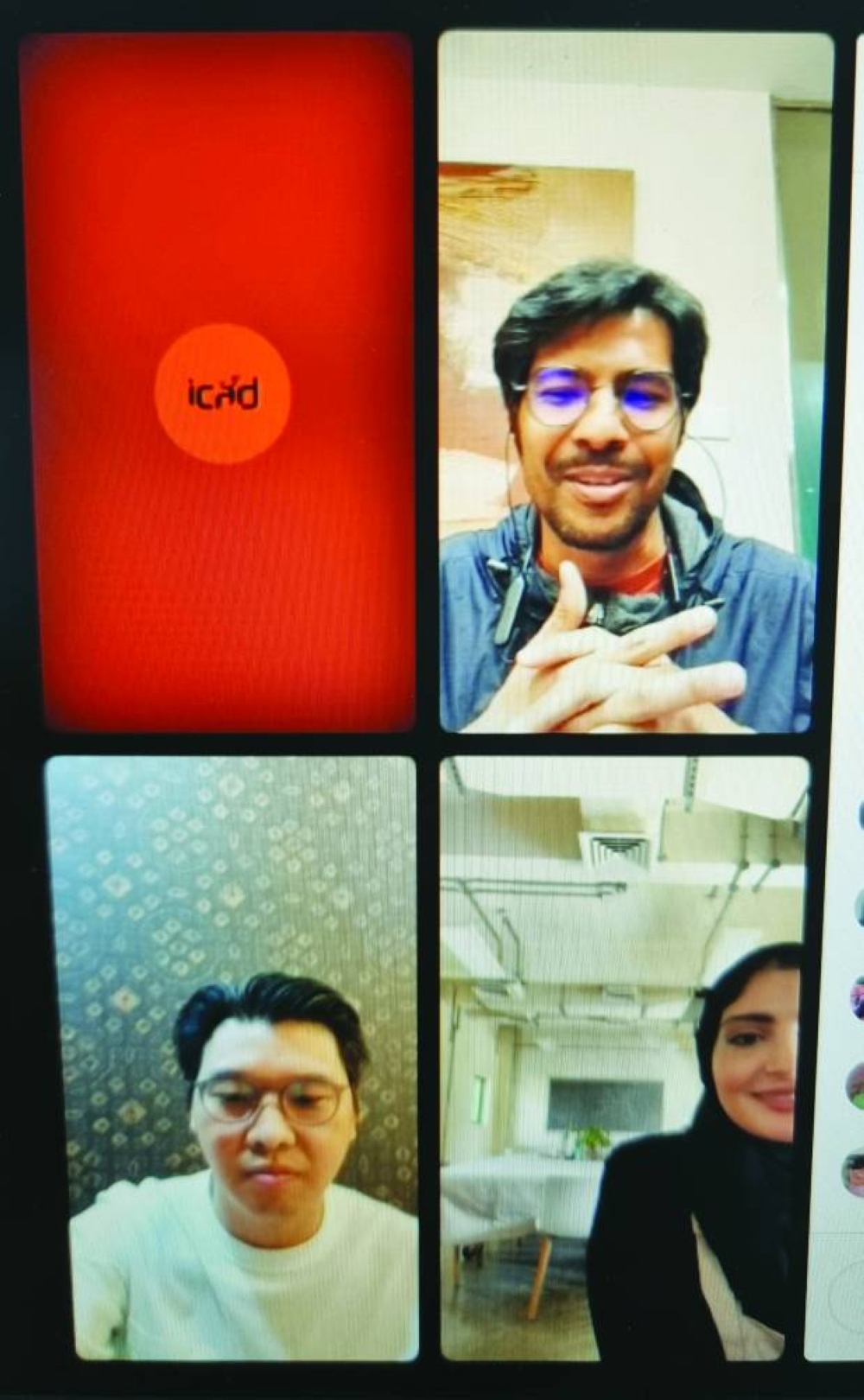A live Instagram session Friday underscored the importance of interdisciplinary collaboration and a deeper understanding of cultures in object design, featuring renowned designers from Qatar and Indonesia who shared valuable insights and experiences.
The online event, organised by the Years of Culture (YoC) initiative and Indonesian Contemporary Art & Design (ICAD), witnessed Noora al-Melhim, Hendro Hadinata, and the moderator, Dian Suri (founder and designer of Kunang Jewellery Studio), engaging in an insightful discussion about the design landscape in both Qatar and Indonesia.
The two designers are taking part in YoC’s Cultukar Residency Programme, which offers Qatari and Indonesian product and fashion designers a unique opportunity to immerse themselves in the traditional know-how and expertise of local craft masters in Indonesia.
Al-Melhim, an interdisciplinary designer based in Qatar, underlined the profound influence of Qatar's rich culture and heritage, which inspires many designers to incorporate elements such as nature, calligraphy, and other traditional concepts into their creative works.
Al-Melhim’s research and prototyping work span various analog and digital media, focusing on regional crafts and cultural experiences. She employs a multidisciplinary approach to create innovative and sustainable interventions that address current issues.
Hadinata, the founder of Studio Hendro Hadinata, emphasised the importance of uniting cultural heritage with innovative practices. His studio works closely with local craftspeople, integrating contextual narratives into objects.
He expressed his profound admiration for Sumba, an enchanting island located in eastern Indonesia. He described it as a place where people deeply value their traditions, showcasing a vibrant arts and crafts scene that permeates their way of life.
“The island is really beautiful and the people really put effort and then believe in the tradition,” he added.
The participants also explored the transformative journey of Qatar and its evolving culture.
“There are a lot of things changed, like from one generation to another especially in Doha like at pre-oil era and the now but our culture, like I know, I’m used to it. So when we do the discussions, we are interested and amazed about the things that I feel I am used to,” al-Melhim said.
She highlighted her research into Hadinata's country and its rich heritage while the latter expressed a reciprocal interest in delving into Qatar's history and culture.
“They were really interested in the pearl-diving, and the idea and the story and I’m interested also in the same way because Indonesians also have a rich history of fishing and I think diving, we have common things,” al-Melhim said.
She added that it is important to explore the idea of blending two cultures, drawing inspiration from both Sumba and Doha, in order to create a captivating masterpiece that beautifully integrates elements from both locations.
Reflecting on their experiences, Hadinata stressed the significance of self-discovery through traditions and finding meaningful connections with fellow crafters and individuals. He pointed out that life gains greater meaning through such collaborative endeavours.
During the talk, the two designers also examined the challenges of bridging cultures and emphasised the importance of finding common ground and remaining open to new ideas.
Both designers hope for the continuation of collaborative programmes like Cultukar, a platform that has a huge potential to generate creative ideas and concepts, and see the involvement of more talented artists in future projects.
Hadinata shared his vision of providing crafters with win-win solutions, empowering them to develop new and relevant creations. He stressed the importance of building confidence and incorporating new materials into their work.
Suri said he hopes that programmes like Cultukar would continue to flourish, not only by focusing on the design itself but also by capturing and documenting the creative process.

Dian Suri, Hendro Hadinata, and Noora al-Melhim at the live Instagram session Friday.

